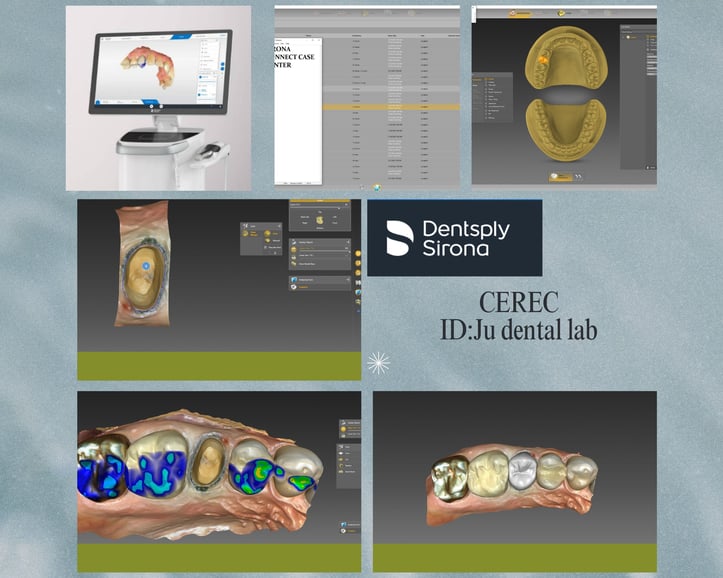Digital intraoral scanning has revolutionized dentistry, replacing traditional impressions with fast, precise, and patient-friendly alternatives. However, achieving high-quality scans requires more than just advanced technology—it demands careful attention to technique, environment, and execution.
Below are the essential precautions to ensure flawless digital intraoral scans and avoid common pitfalls! 🚀
1️⃣ Stick to a Systematic Scanning Order
A well-structured scanning sequence minimizes errors and ensures smooth data capture.
✔ Follow a logical scan path – Start with occlusal surfaces, then move to lingual and buccal areas.
✔ Use a short, direct scanning path from the starting point to the endpoint to enhance accuracy.
✔ For full-arch scans, begin with posterior teeth and move toward the anterior region to maintain alignment.
💡 Pro Tip: Inconsistent scan sequences can result in misalignment, stitching errors, and distortions—stick to a standardized protocol for the best results!
2️⃣ Maintain Optimal Intraoral Conditions
✔ Control moisture – Saliva, blood, and gingival crevicular fluid can distort scan accuracy. Use air syringes or suction to keep surfaces dry.
✔ Prevent scanner fogging – Temperature differences can cause condensation on the scanner lens, leading to blurry scans. Allow the scanner to warm up before use.
💡 Pro Tip: In a moist environment, scan larger areas first before going back for refinements to reduce soft tissue distortion.
3️⃣ Minimize Soft Tissue Interference
Soft tissue encroachment can corrupt scan data and introduce artifacts that make occlusal adjustments difficult.
✔ Retract cheeks, lips, and tongue to ensure a clear view of the target area.
✔ Check for soft tissue overlapping the margins or interproximal contacts—adjust scanner angulation if necessary.
✔ Confirm that the gingiva does not distort prep margins before finalizing the scan.
💡 Pro Tip: Use a mouth prop or cotton rolls to help maintain retraction for better visibility and patient comfort!
4️⃣ Watch Out for Highly Reflective Surfaces
Metallic restorations (e.g., gold crowns, amalgam fillings, zirconia abutments) can create reflection issues that interfere with scan accuracy.
✔ Use a scanning spray or powder to reduce glare and improve the scanner’s ability to read surfaces.
✔ Adjust scanning angles to avoid direct reflections bouncing into the scanner.
💡 Pro Tip: Titanium abutments & highly polished surfaces often require multiple scanning angles to capture precise margins!
5️⃣ Be Mindful of Scan Body Identification for Implants
✔ When scanning multiple implants, using identical scan bodies can cause positional confusion.
✔ Ensure each scan body is fully captured from multiple angles to allow for accurate digital processing.
✔ Check for misalignment between scan body positions before sending the scan for restoration design.
💡 Pro Tip: To improve accuracy, verify scan body fit intraorally before scanning—incorrect placement can create significant restoration mismatches!

6️⃣ Understand Your Scanner’s Capabilities
✔ Familiarize yourself with your scanner’s resolution, depth perception, and processing algorithms.
✔ Pay attention to wand size and weight—some scanners require a steadier hand and controlled movements.
💡 Pro Tip: Each scanner has its own software limitations—learn how your specific system processes data to minimize errors!
Here are some additional details about popular intraoral scanner capabilities from various companies:
-
iTero Element 5D Plus:
-
Features a 45-degree angled scanning wand for easier access.
-
Completes full arch scans in about 30 seconds.
-
Produces high-definition color images.
-
Can differentiate between tongue, cheek, and tooth structures.
-
-
CEREC Primescan:
-
Known for very clear and fast scanning.
-
Large screen on the scanner allows for excellent visibility.
-
Can complete a full arch scan in less than 90 seconds.
-
Excellent compatibility with CEREC milling machines
-
-
Medit i700:
-
Offers AI-driven and color-scanning capabilities.
-
Known for high accuracy and speed.
-
Designed for seamless integration with CAD/CAM systems.
-
-
3Shape TRIOS 4:
-
Features wireless connectivity for flexibility in clinical settings.
-
Offers intuitive software with advanced treatment planning features.
-
Known for exceptional speed and accuracy in both restorative and orthodontic procedures.
-
-
iTero Lumina:
-
Provides real-time feedback and analysis.
-
Seamlessly integrates with Invisalign for orthodontic workflows.
-
Offers highly accurate digital impressions for precise dental restorations.
-
7️⃣ Always Verify Scan Data Before Submission
✔ Check for missing data—especially in margins, interproximal areas, and occlusal contacts.
✔ Review for distortion or excessive overlapping—adjust scanning technique accordingly.
💡 Pro Tip: Many scanners now feature AI-driven quality control tools—use them to automatically detect inconsistencies and correct errors before submission!
🏆 The Takeaway: Scanning Like a Pro!
By following these precautions, you can ensure every intraoral scan is precise, efficient, and free of errors:
✅ Stick to a logical scanning order to maintain consistency.
✅ Control moisture and prevent scanner fogging for crisp images.
✅ Retract soft tissue effectively to avoid unwanted artifacts.
✅ Use proper techniques for scanning metallic restorations and implants.
✅ Understand your scanner’s strengths and limitations.
✅ Always review scan data before submission to catch any issues early.
Mastering digital intraoral scanning isn’t just about using the right equipment—it’s about perfecting technique, optimizing workflow, and staying one step ahead of potential challenges!
💬 What are some scanning challenges you’ve faced in your practice?
Let’s discuss best practices and take digital dentistry dental practice to the next level! 🚀🦷✨

COMMENTS